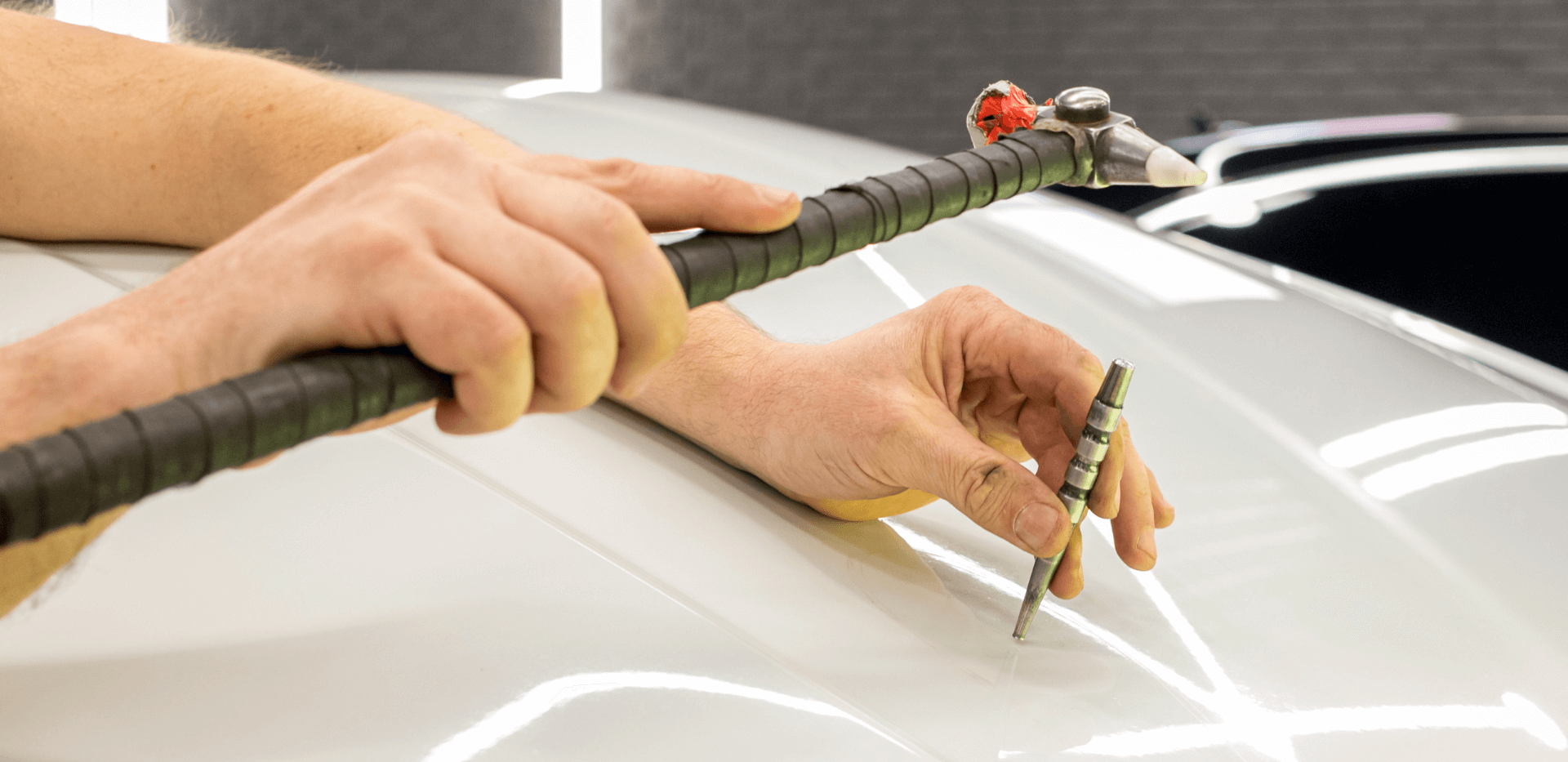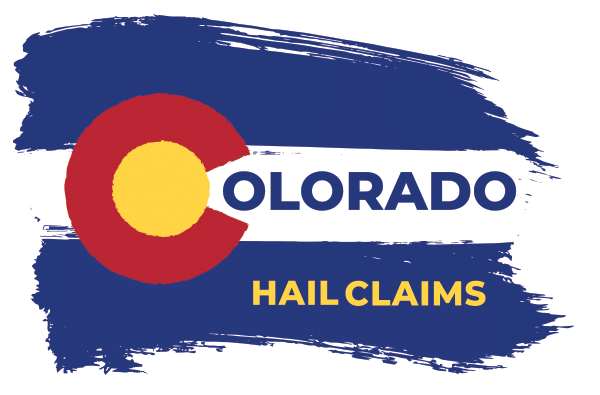Frequently asked questions: Hail car damage and paintless dent repair
Your guide to understanding the aftermath of a hailstorm and paintless dent repair.
Colorado’s ‘Hail Alley’ is no stranger to the devastating impacts of hailstorms. While our cars often bear the brunt of Mother Nature’s fury, the aftermath doesn’t have to be a nightmare. Let’s explore some common questions about hail car damage and the repair process.
Q: Why does Paintless Dent Repair (PDR) work so effectively?
A: PDR is a refined process that requires skilled technicians to manipulate the metal back to its original form. Using specialized tools, these experts apply pressure from behind the dent, ensuring the original paint remains untouched. The technique preserves the vehicle’s resale value and original finish, setting it apart from traditional repair methods.
Preparing a vehicle for hail damage repair at our Brighton, Colorado Workshop, July 2023.
Q: What happens if I neglect hail damage on my vehicle?
A: Neglecting hail damage can lead to complications. Not only does every dent have the potential to damage your vehicle’s factory finish, but insurance restrictions, like the “prior damage restriction,” could lead to denied claims for subsequent issues. It’s essential to address these dents promptly to maintain your car’s integrity and value.
Q: How do you get dents out without damaging the paint?
A: This is where the magic of PDR shines. By accessing the back of the dent, skilled technicians use specific tools to massage the affected area until the metal returns to its original position. This method ensures the car’s exterior paint remains intact, eliminating the need for fillers, sanding, or repainting.
Q: Can I attempt to fix a hail dent at home?
A: While DIY methods are popular, they often come with risks. An incorrect technique can lead to further damage or affect the paint. Professional PDR ensures the repair is done correctly, preserving your car’s value and appearance.
Q: Does PDR have other benefits besides preserving original paint?
A: Absolutely. PDR is not only faster than traditional methods, but it’s also more cost-effective in many cases. With the original paint preserved, the car retains its value better. Plus, the environmentally friendly process avoids using chemicals or new paint.
Q: How can I be sure my vehicle is a good candidate for PDR?
A: Most hail damage can be effectively treated with PDR. However, if the paint is broken or there are sharp dents and creases, other repair methods might be necessary. It’s best to consult experts like Colorado Hail Claims to assess the damage.

Paintless Dent Repair experts at Colorado Hail Claims
Q: How long does the PDR process typically take?
A: The duration varies based on the extent of the damage. Minor dents can be fixed in a matter of hours, while more severe hail damage might require a couple of days. Rest assured, with PDR, the turnaround is generally quicker than conventional repair methods.
Q: Is PDR covered by insurance?
A: In many cases, yes. Hail damage repair, especially when done through PDR, is often covered under comprehensive car insurance policies. It’s always a good idea to check with your insurance provider and a trusted repair service like Colorado Hail Claims for guidance.
In conclusion
Understanding the ins and outs of hail damage repair is crucial for Colorado residents. With techniques like Paintless Dent Repair, it’s easier than ever to restore your car to its former glory without breaking the bank or compromising its original finish. For further information or to address specific concerns, reach out to the experts at Colorado Hail Claims. Got another question? Contact the friendly team at Colorado Hail Claims.


